Step By Step What you Need To Understand About Facebook Marketing Ads Placement
Am sure you will have heard about Facebook’s Marketplace ad placement!
you might not understand what it really means then, but in this Article, I will explain to you Want to know about placing your Facebook ad campaigns in Marketplace.
Why Consider Facebook Marketplace for Ad Placement?
Marketplace is Facebook’s equivalent to eBay and Craigslist. The major advantage it has over the competition is the existing Facebook user base. Marketplace now has over 800 million monthly users. Additionally, it now occupies the central tab on the mobile app’s menu bar.

When you advertise exploitation the Marketplace placement, you’re not promoting a product that you’re trying to sell via Marketplace. Instead, you’re advertising within the same approach you'd within the news feed or the opposite placement options.
While Facebook offers multiple ad placement choices, Marketplace is unique in this users UN agency browse (at least a large proportion of them) have a buyer’s intent and they are actively looking for the products to buy.
While Facebook offers multiple ad placement choices, Marketplace is unique in this users UN agency browse (at least a large proportion of them) have a buyer’s intent and they are actively looking for the products to buy.

Comparative expectation based promoting stages, for example, Google AdWords have summoned a premium on the web. In many markets, it costs significantly more to contact 1,000 individuals through Google's pursuit arrange than it does on Facebook, which bodes well. Focusing on individuals who are currently searching for something is more successful than focusing on individuals who may be occupied with something.
The vast majority of the items recorded in Marketplace are purchased and sold locally. Also, for organizations hoping to prevail with the Marketplace advertisement arrangement, a nearby concentration is probably going to be vital.
Clients hope to see certain kinds of items recorded available to be purchased. Organizations that offer comparative items to those recorded are probably going to see the best outcomes. Home and Garden, for instance, is a standout amongst the most prominent classes and furniture is among the most generally offered things.
The vast majority of the items recorded in Marketplace are purchased and sold locally. Also, for organizations hoping to prevail with the Marketplace advertisement arrangement, a nearby concentration is probably going to be vital.
Clients hope to see certain kinds of items recorded available to be purchased. Organizations that offer comparative items to those recorded are probably going to see the best outcomes. Home and Garden, for instance, is a standout amongst the most prominent classes and furniture is among the most generally offered things.
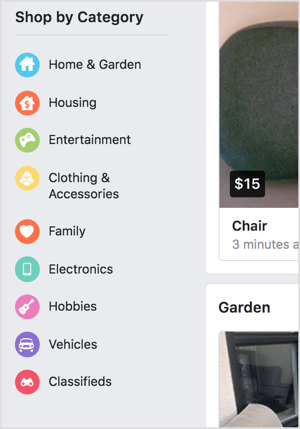
There are also a lot of vehicles listed for sale, and many people offer rental properties.
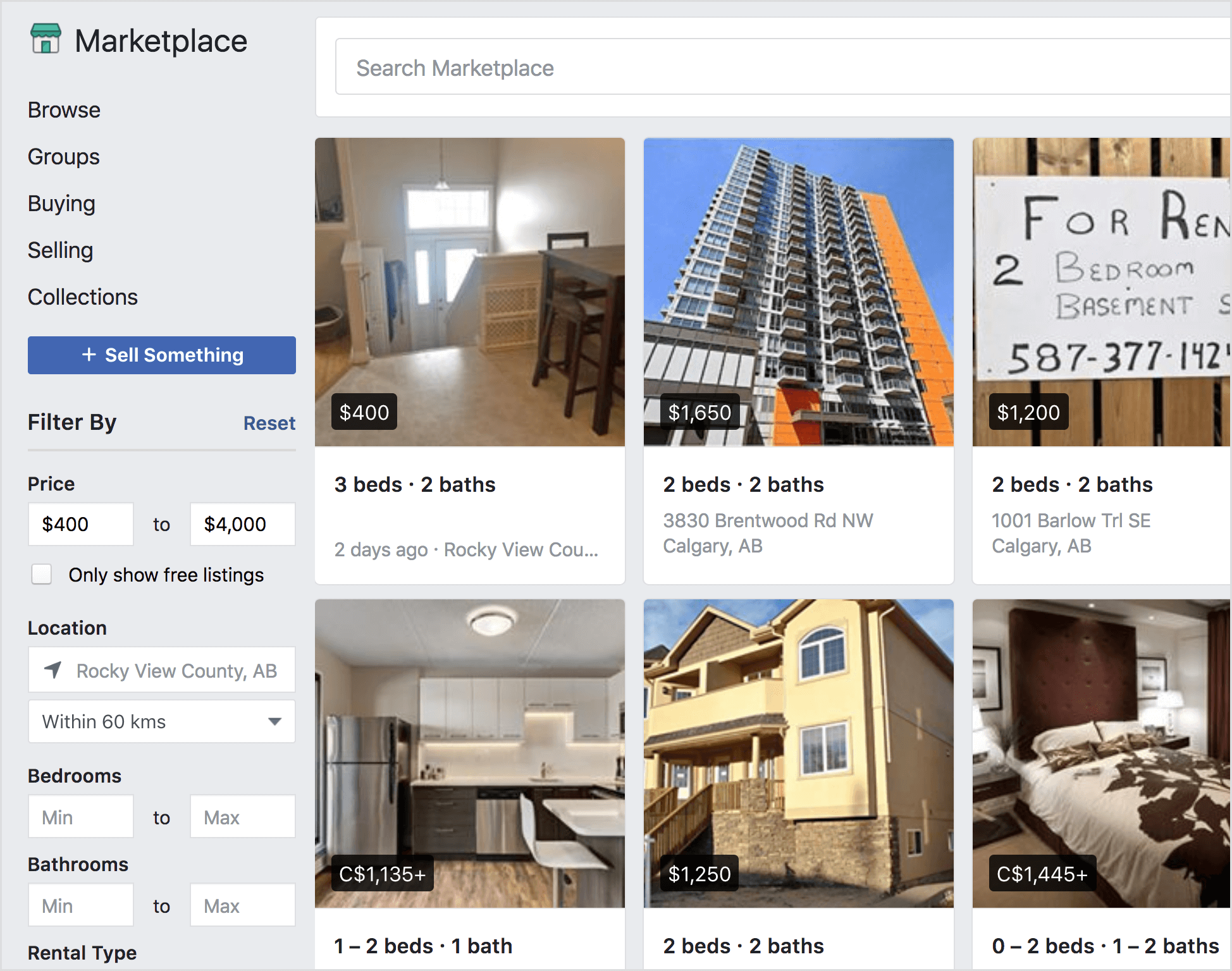
If your company offers products that are similar to those commonly listed, there’s a good chance Marketplace will work for you. Here’s how to get started.
#1: Create a Facebook Ad Campaign With an Applicable Campaign Objective
Marketplace is available as a placement option only for certain campaign objectives. Right now, it can be used with the Reach, Traffic, Conversions, Catalog Sales, and Video Views objectives.
If you have an existing Facebook ad campaign that uses one of these objectives, you can skip this step. Otherwise, head to Ads Manager and click Create.

Next, select one of the applicable campaign objectives.
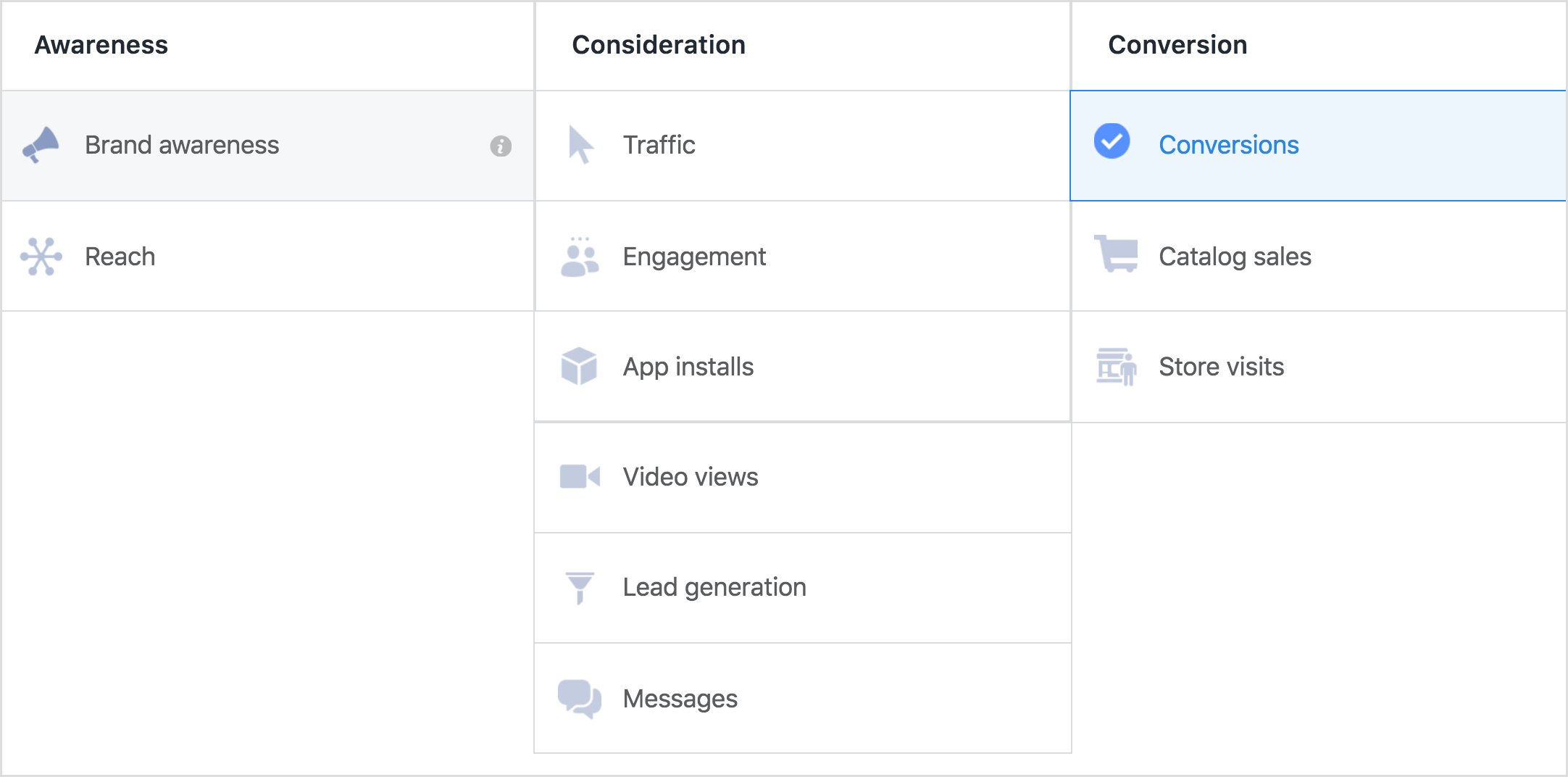
Then give your new campaign a name and click Continue.
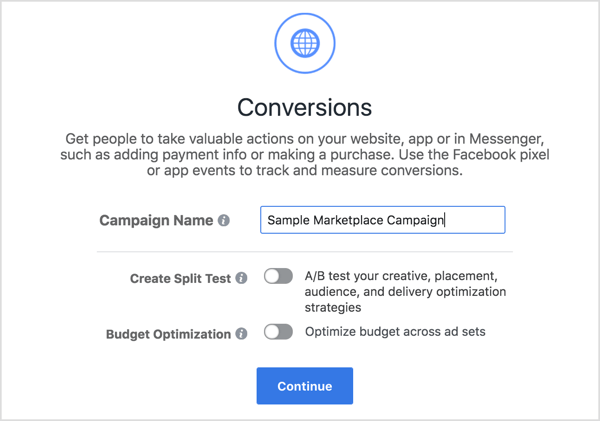
Now you’re taken to the Ad Set Creation page, and you can move on to the next step.
#2: Choose the Marketplace Ad Placement
Facebook’s Marketplace is currently rolling out as a new ad placement. It’s now available in most U.S. ad accounts but not yet worldwide. However, this functionality is likely to be available to other countries very soon.
To check that Marketplace is available in your Facebook ad account and use it in this campaign, scroll down to the Placements section. Facebook’s default setting is to advertise on all placements. To check that Marketplace is available, select Edit Placements.
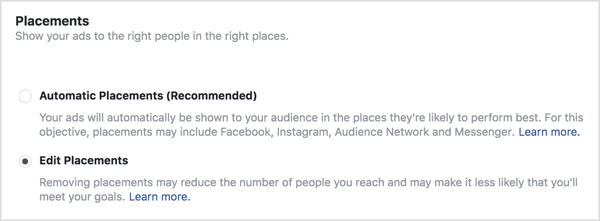
Currently, Marketplace is available only as a mobile placement option, but it’s likely to become an option on desktop soon as well.
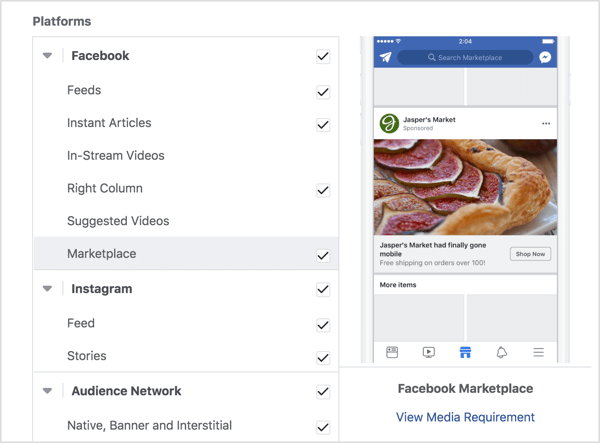
For ad accounts that have this functionality, Marketplace is included when Automatic Placements is selected. This means that many Facebook advertisers will be advertising in the Marketplace without realizing it.
It’s not currently possible to advertise exclusively in Marketplace. You need to also have Facebook Feeds selected to use Marketplace as a placement option. Otherwise, you’ll see this warning message.
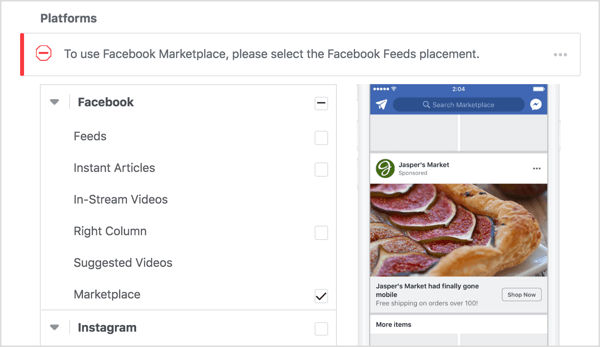
Make sure that Marketplace is selected and then enter the rest of your targeting details at the ad set level.
#3: Create a Facebook Marketplace Video Ad
Now you’re ready to move on to the Ad Creation section. The recommended ad specs for Marketplace are the same as for news feed ads and it’s not possible to alter ad creative between those two placements. Facebook recommends that single images are 1,200 x 628 pixels and carousel images are 600 x 600 pixels.
While the ads may look the same on both placements, the context they’re in is very different, so certain things are likely to work well on Marketplace and others aren’t.
Videos
Half of the challenge with interruption advertising is grabbing users’ attention. Unlike the news feed, Marketplace is dominated by static images so videos (particularly product demonstrations) will stand out a lot more. Videos usually outperform static images across Facebook and I expect that to be exaggerated in Marketplace.
Finding video ads in Marketplace is next to impossible at the moment. But this video ad taken from the news feed is just the sort of ad that’s likely to deliver fantastic results in Marketplace.
The ad is promoting the right type of product to the right audience when it’s in the right mindset. And the product demonstration in video format grabs users’ attention.
Not Content
It’s too early to make definitive conclusions, but I don’t expect content ads to perform well in Marketplace. Expert Facebook advertisers often advocate using content to warm up cold audiences, and rightly so. But in Marketplace, ads that promote blog posts or other forms of content will look out of place and probably be ignored as a result. Of course, this is something that you can try out.
#4: Analyze Marketplace Ad Placement Results
As with all things Facebook advertising, I strongly recommend that you test the Marketplace placement. Its uniqueness means it’s likely to deliver great results for certain businesses, products, and ad formats.
To see how Marketplace is performing in comparison to other placements, you can filter your ad reports. Simply select By Delivery > Placement from the Breakdown drop-down menu.
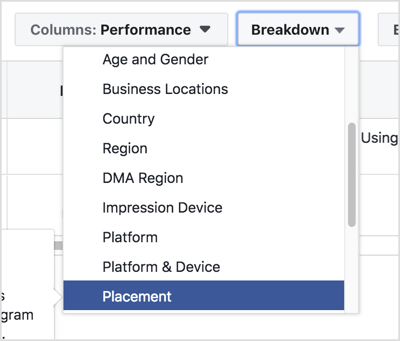
If you’re in the U.S. and using Automatic Placements with your Facebook campaigns, there’s a good chance you’ve been advertising in Marketplace without realizing it. This means you may already have data you can use to assess Marketplace’s effectiveness for your offers.
Watch Out for False Positives
When new Facebook advertising features are released, advertisers often see false negatives or false positives. A false negative refers to something that doesn’t work initially but does in the long run. A false positive is an opposite.
False negatives with Facebook advertising most often occur because users are unfamiliar with something new and therefore avoid it initially. False positives, on the other hand, are often the result of an initial lack of competition.
With Marketplace, you may see a bit of a false positive. Because it’s very new, few advertisers are using it and competition is a major factor in determining the cost of Facebook ads. Lack of advertiser competition early on will most likely lead to a lower cost than other placements initially, making it a great short-term opportunity.
But as other Facebook advertisers start using the placement, this early advantage is likely to disappear. This doesn’t mean that Marketplace won’t deliver great results over the long run. It’s just important to be aware of the market forces at play and not get too excited early on.







No comments